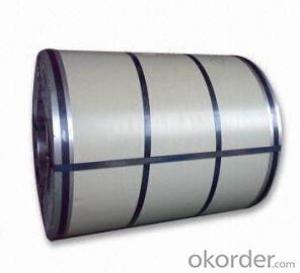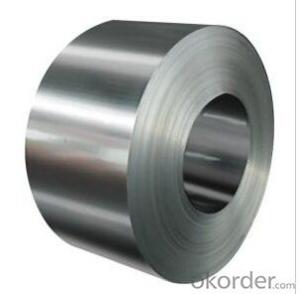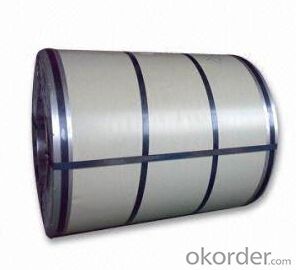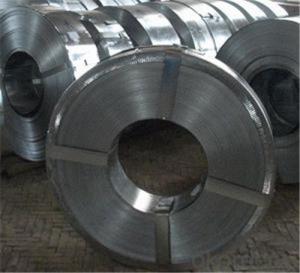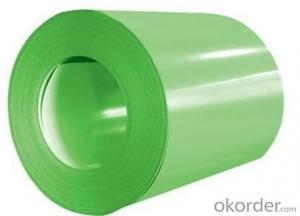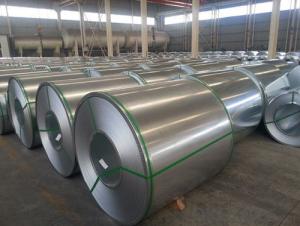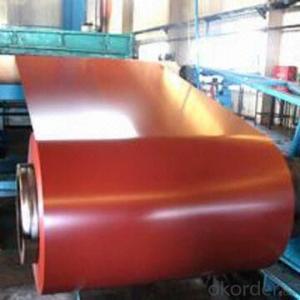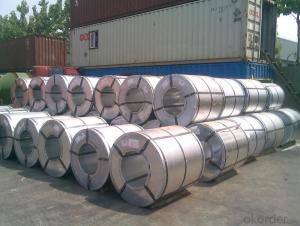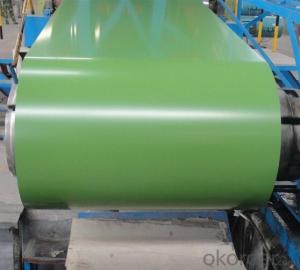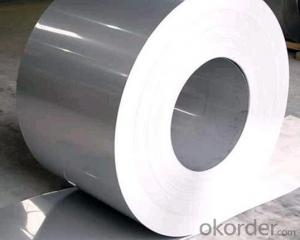Galvanized Steel Coil (SGCC, DX51D, ASTM A653)
- Loading Port:
- Tianjin
- Payment Terms:
- TT OR LC
- Min Order Qty:
- 25 m.t.
- Supply Capability:
- 20000 m.t./month
OKorder Service Pledge
OKorder Financial Service
You Might Also Like
Description Info.
Model NO.:SGCC, DX51D, ASTM A653
Surface Treatment:Galvanized
Technique:Cold Rolled
Standard:ASTM, JIS, GB, AISI, DIN, BS
Steel Grade:SGCC, Dx51d
Thickness:0.15-5.0mm
Width:914, 925, 1000, 1219, 1220, 1250, 1500
Zinc Coating:Z60-Z275, G30-G90
Surface:Regular Spangle, No-Spangle or Mini Spangle
Reference Standard:JIS G3302-1998, En10142-2000, GB/T2518-2004, ASTM
Export Markets:Global
Additional Info.
Packing:Export Standard
Standard:SGCC, DX51D, ASTMA653
Origin:China
HS Code:7210490000
Production Capacity:20000mt Per Month
Product Description
Products Key words:
galvanized steel, galvanized steel coil, galvanized steel sheet, gi, gi coil, gi sheet, hdgi, hot dip galvanized steel coil, galvanized sheet, gi sheet price, zinc sheets, galvanized sheet metal prices, zincked sheet, galvanized strip, price of zinc sheets, zinc strip sheet, galvanized sheet metal fence panel,corrugated galvanized steel sheet,galvanized roofing sheet
Material brand:
SGCC,DX51D,ASTMA653,commercial quality,cs type A,locking forming type,S250,S280GD,S350GD,G550,SGC400,SGC440,S250GD,S350GD,G550,SGH340,SGH440.
HDGI Manufacture
THICKNESS 0.15-5.0MM,WIDTH,914,925,1000,1219,1220,1250,1500, Galvanized steel coil, HDGI
Thick: 0.15 to 5.0mm
Reference standard: JIS G3302-1998, EN10142-2000, GB/T2518-2004, ASTM A653M
Zinc coating:Z60-Z275,G30-G90,
Regular Spangle, No-spangle or Mini Spangle
Coil diameter: ID 508mm 610mm
Equal coating thickness:
Coating Weight Marking Code (Zinc)Z06Z08Z10Z12Z18Z20Z22Z25Z275
Coating Thickness0.0130.0170.0210.0260.0340.0400.0430.0490.054
Packaging Details:
Packing: Standard export packing, 4 eye bands and 4 circumferential bands in steel, galvanized metal fluted rings on inner and outer edges, galvanized metal and waterproof paper wall protection disk, galvanized metal and waterproof paper around circumference and bore protection
Scope of Application:
Usage: construction,the manufacturing of cars, ships, containers and household electric appliances,other industries usage.
World wide customer satisfaction:
More than 50 worldwide customers none-risky experiences approved.
Yogic has been exporting steel coils to more than 50 countries directly. Our long term supply extends to USA, UK, Germany, Italy, Spain, Belgium, France, Poland, Greece, Ukraine, Belarus, Russia, Turkey, Egypt, Saudi Arabia, Iran, Ethiopia, Niger, Brazil, Colombia, Chile, Peru, Australia, New Zealand, etc...

FAQ
1.What's your MOQ?
25MT, it is for one container.
2.Do you have QC teams?
Yeah, sure, our QC team is very important, they will keep the quality control for our products.
3. What's your normal delivery time?
Our delivery time about 10-20days for standard sizes, if you have other requirements like hardness and width ,it is about 20-40days. But don't worry ,we also try our best for the delivery time ,because time longer and our cost is higher.
4.Are the products tested before shipping?
Yes, all of our PPGI and GI was qualified before shipping. We test every batch every day.
- Q: What are the dimensions of a steel coil?
- The dimensions of a steel coil can vary depending on its intended use and manufacturer. However, typical dimensions include a width ranging from 600mm to 2,200mm, a diameter of 600mm to 2,000mm, and a weight ranging from a few hundred kilograms to several metric tons.
- Q: what is tool steel and does it function better than carbon or spring steel?
- Tool okorder for some ideas on stuff that tool steel can be made into.
- Q: I saw a 27 sedan and a 27 Pick-up one had wood wheels the other steel, respectively. Witch one was original or were they both original
- Steel wheels were not available on the pickups until 1929. The cars had the options of steel disc or wood spoke wheels in the mid '20's. I'm pretty sure that '27 was the last year the wood wheels were available on passenger cars.
- Q: which is the most tough and durable steel type ??
- Speaking of Building Construction, we use grade 450 and 450B not because of toughness, its because it best serves its purpose, reinforcing concrete structure should provide the enough ductility of structure to resist flexure/bending when loads are imposed on it.
- Q: How are steel coils inspected for dimensional accuracy during processing?
- Steel coils are inspected for dimensional accuracy during processing using various methods such as laser measuring systems, ultrasonic thickness gauges, and calipers. These tools are used to measure the width, thickness, and diameter of the coils to ensure they meet the required specifications. Additionally, visual inspections are also conducted to identify any irregularities or defects in the coils.
- Q: What are the dimensions of steel coils used in the mining equipment industry?
- The dimensions of steel coils used in the mining equipment industry can vary depending on the specific application and requirements. However, there are some common dimensions that are often used. Typically, the width of steel coils used in the mining equipment industry can range from 600mm to 2000mm or even wider. This allows for flexibility in the manufacturing process and ensures that the coils can be tailored to fit various equipment sizes and specifications. In terms of thickness, steel coils used in mining equipment can vary from 1.5mm to 20mm or more. The specific thickness is determined by factors such as the type of equipment, the intended use, and the level of durability required. The length of steel coils used in the mining equipment industry can also vary, but commonly falls within the range of 1000mm to 6000mm. Again, this allows for flexibility in the manufacturing process and ensures that the coils can be cut to fit the specific requirements of the equipment being produced. It is important to note that these dimensions are not set in stone and can be customized to meet the specific needs of the mining equipment industry. Manufacturers and suppliers in the industry are often able to provide coils in various sizes and dimensions to accommodate the diverse range of equipment used in mining operations.
- Q: Please explain why steel is denser than wood.
- The atoms in steel are more tightly packed. They have a greater mass in a smaller volume than wood. Basically, if you take 100 g of steel and 100 g of wood, the piece of steel will be smaller (less volume) than wood and therefore more dense. Density = Mass/Volume
- Q: What are the common surface finishes available for steel coils?
- The common surface finishes available for steel coils include hot-dip galvanized, galvannealed, electro-galvanized, and painted finishes.
- Q: What are the different types of corrosion protection for steel coils?
- There are several different types of corrosion protection for steel coils, including galvanizing, paint coatings, organic coatings, and metallic coatings. Each method provides a barrier between the steel surface and the corrosive environment, preventing or slowing down the corrosion process. Galvanizing involves applying a layer of zinc to the steel surface, while paint coatings use various types of paints or primers. Organic coatings utilize polymers or resins to form a protective layer, and metallic coatings such as tin or aluminum can also be applied. The choice of corrosion protection method depends on factors such as the specific corrosive environment, desired lifespan, and cost considerations.
- Q: How are steel coils used in the production of household appliances?
- Steel coils are used in the production of household appliances as they serve as the primary material for manufacturing various components such as the outer body, frame, and internal structures. These coils are formed into different shapes and sizes, allowing for the creation of durable and robust appliances. The steel coils provide strength, stability, and resistance to wear and tear, ensuring the longevity and reliability of the appliances.
Send your message to us
Galvanized Steel Coil (SGCC, DX51D, ASTM A653)
- Loading Port:
- Tianjin
- Payment Terms:
- TT OR LC
- Min Order Qty:
- 25 m.t.
- Supply Capability:
- 20000 m.t./month
OKorder Service Pledge
OKorder Financial Service
Similar products
Hot products
Hot Searches
Related keywords
